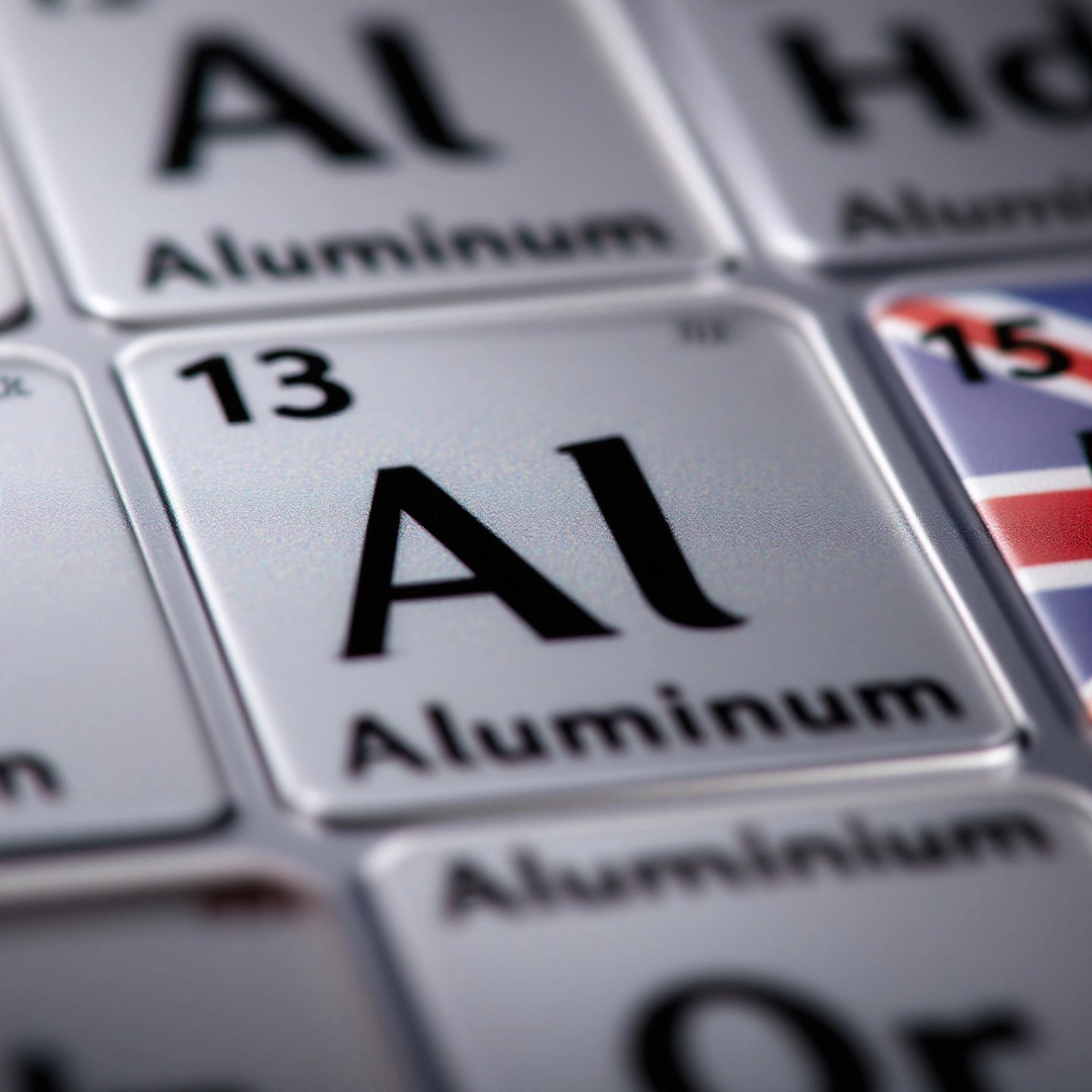
Why does the same silvery metal go by two names—aluminum in Texas and aluminium in London? This linguistic quirk isn’t a matter of right vs. wrong but a tale of scientific evolution and cultural identity. Both terms refer to the same lightweight, corrosion-resistant element (atomic number 13), yet their usage splits the English-speaking world like a well-worn map.
The divide traces back to the early 19th century when British chemist Sir Humphry Davy first isolated the metal. Initially dubbing it alumium, he later revised it to aluminum before settling on aluminium to align with elements like sodium and magnesium. Meanwhile, American lexicographer Noah Webster championed the shorter aluminum in his 1828 dictionary—a decision that stuck in North America.
Today, the spelling you use depends largely on geography:
This article unpacks how a single letter difference became a global divide. You’ll discover:
By the end, you’ll understand why both terms endure and how to use them confidently in any context.

The aluminum vs aluminium debate began as a scientific miscommunication in 1808, when British chemist Sir Humphry Davy first isolated the metal. Through electrolysis experiments on alumina (aluminum oxide), Davy initially proposed the name alumium—a logical derivative of alumen, the Latin word for alum. But like many first drafts, this term didn’t stick.
By 1812, Davy revised his naming strategy to match other elements:
This -ium suffix aligned with International Scientific Vocabulary conventions, cementing aluminium as the preferred term in British scientific circles. As noted in Davy’s 1812 lecture transcripts, the shift aimed to standardize elemental nomenclature.
Across the Atlantic, American lexicographer Noah Webster had other ideas. His groundbreaking 1828 An American Dictionary of the English Language listed only aluminum, dropping the second ‘i’ for phonetic simplicity. This decision mirrored Webster’s broader mission to create a distinct American English identity—one letter at a time.
The timeline below clarifies common misconceptions about which term came first:
| Year | Milestone |
|---|---|
| 1808 | Davy proposes alumium |
| 1812 | Davy revises to aluminium |
| 1828 | Webster’s dictionary adopts aluminum |
| 1925 | American Chemical Society formally accepts aluminum |
Industrial advancements further entrenched these regional preferences. While Charles Martin Hall’s 1886 electrolytic process made mass production feasible, it was branding—not chemistry—that solidified the divide. By the time IUPAC recognized both spellings in 1990, the linguistic lines were already drawn.
Next, we’ll explore how these early variations shaped modern scientific terminology and commercial labeling practices.
Why does this element have two spellings? The answer lies in a 19th-century tug-of-war between scientific standardization and linguistic simplicity. After Sir Humphry Davy’s initial alumium proposal in 1808, the naming journey took unexpected turns shaped by geography and editorial choices.
Davy first identified the metal in 1808 but struggled to name it. His original term alumium—derived from alumen (Latin for alum)—lasted just four years. By 1812, he revised it to aluminium to align with other elements like sodium and potassium, establishing the -ium suffix as standard in British science.
Meanwhile, American lexicographer Noah Webster prioritized brevity. His 1828 An American Dictionary of the English Language listed only aluminum, dropping the second ‘i’ for phonetic simplicity. This mirrored his broader mission to streamline American English, as noted in Merriam-Webster archives. Webster argued the shorter version matched common usage in U.S. mining and trade.
British journals rejected Webster’s spelling, retaining aluminium to preserve consistency with other elements. This divide deepened over time:
The International Union of Pure and Applied Chemistry (IUPAC) attempted to resolve the conflict in 1990 by accepting both terms. However, as noted in ThoughtCo’s analysis, the U.S. retained aluminum due to its entrenched use in industry and education.
This linguistic split reflects deeper cultural priorities: British science favored systematic naming, while American English valued accessibility. Next, we’ll explore how these preferences solidified into regional dominance—and why your location might determine which spelling feels “right.”

Ever wondered why your Canadian friend says aluminum foil while your British colleague insists on aluminium foil? The answer lies in a geographic divide that’s as clear as the Atlantic Ocean. Let’s map out where each spelling reigns supreme—and why.
| Region | Preferred Spelling | Example |
|---|---|---|
| USA & Canada | Aluminum | Aluminum beverage cans (Coca-Cola, Pepsi) |
| UK & Australia | Aluminium | BS EN 573-3:2019 (British aluminium alloy standards) |
| International Science | Both Accepted | IUPAC publications |
Though part of the Commonwealth, 85% of Canadians use the American spelling according to linguistic surveys. Three key factors explain this:
As noted in QuillBot’s language analysis, this creates a unique linguistic crossover where Canadian English blends British spellings like colour with American technical terms like aluminum.
Britain’s commitment to aluminium goes beyond tradition. The spelling appears in:
This consistency helps maintain clarity in international collaborations—when a British engineer references aluminium alloy 6061, their Japanese counterpart instantly recognizes the material designation.
Up next: How these spelling differences translate into distinct pronunciations that shape professional communication worldwide.
Ever wondered why Americans and Brits argue over more than just soccer vs. football? The aluminum/aluminium divide extends to pronunciation, creating distinct auditory identities across the Atlantic. Let’s decode why these variations matter beyond casual conversation.
| Variant | IPA Transcription | Syllables |
|---|---|---|
| American | ə-ˈlü-mə-nəm | 4 (a-loo-mi-num) |
| British | ˌæl.jʊˈmɪn.i.əm | 5 (al-you-mini-um) |
The British aluminium pronunciation adds an extra ‘i’ sound (/-i.əm/) to match its spelling, while the American version streamlines to four syllables. This difference stems from Noah Webster’s 19th-century spelling reforms, which prioritized phonetic efficiency over Latin-derived suffixes.
In professional settings, these variations aren’t just academic quirks—they affect clarity. Consider these real-world scenarios:
As noted in the Common European Framework of Reference for Languages, intelligible pronunciation is crucial for “effective information exchange in professional contexts.” This is why multinational corporations like Boeing standardize terminology in technical documents, even if internal teams use regional pronunciations.
Global industries employ these strategies to prevent misunderstandings:
Whether you say aluminum or aluminium, clarity remains key. Next, we’ll explore how these naming conventions appear on chemistry’s most fundamental map—the periodic table.

Ever wondered why your chemistry textbook spells element 13 differently than your friend’s international edition? The answer lies in the periodic table’s quiet role in the aluminum vs aluminium debate. Let’s decode how this scientific icon handles the naming divide.
The International Union of Pure and Applied Chemistry (IUPAC) recognizes aluminium as the element’s primary name but accepts aluminum as a variant. This dual approval traces back to 1990, when IUPAC acknowledged both spellings to accommodate global usage while maintaining historical consistency with other -ium elements like sodium and magnesium.
Key IUPAC guidelines explain this flexibility:
Flip through periodic tables worldwide, and you’ll notice:
This split reflects educational traditions rather than scientific inaccuracies. As noted in IUPAC’s guidelines, regional preferences are valid as long as the atomic symbol (Al) and number (13) remain consistent.
For global suppliers like Shengxin Aluminum, this duality is routine. Their technical documentation uses both terms interchangeably, ensuring seamless collaboration with partners from Detroit to Dubai. As industry leaders in aluminum profile manufacturing, they prioritize clarity without regional bias—whether specifying alloy compositions or packaging standards.
Next, we’ll explore how this linguistic flexibility plays out in everyday products like kitchen foil.
Does the spelling on your kitchen foil actually matter? While both terms describe the same thin metal sheets used for wrapping leftovers or baking potatoes, regional labeling conventions reveal fascinating insights into consumer psychology and scientific branding.
The shorter aluminum foil dominates U.S. and Canadian markets for three key reasons:
British and EU manufacturers retain aluminium foil to:
This divide impacts global commerce. A 2023 market analysis shows 72% of U.S. foil exports use aluminum labeling, while 89% of UK/EU exports specify aluminium. Though chemically identical, these labels cater to regional expectations—much like color vs colour in software interfaces.
These regional labeling strategies also influence how other Commonwealth nations approach the spelling debate—a topic we’ll explore next.
Why do two Commonwealth nations spell the same element differently? While Canada leans toward aluminum and Australia clings to aluminium, their choices reveal how language evolves through trade, education, and media.
Despite British colonial roots, 85% of Canadians use the -um ending according to Statistics Canada. Three forces drive this preference:
Australia officially uses aluminium in government documents and academia, but tech sectors increasingly adopt aluminum when collaborating with U.S. firms. For example:
Both nations balance tradition with practicality:
| Factor | Canada | Australia |
|---|---|---|
| Primary Spelling | Aluminum | Aluminium |
| Key Influence | U.S. trade partnerships | British scientific legacy |
| Exceptions | Quebec’s French-language aluminium | Tech sector’s aluminum usage |
This linguistic flexibility ensures global relevance—whether negotiating mining deals or publishing research. Next, we’ll explore why both spellings remain viable in our interconnected world.
Why hasn’t one spelling replaced the other? The endurance of both aluminum and 5058 aluminium reflects a delicate balance between cultural identity and scientific pragmatism. Let’s unpack the forces keeping this linguistic duality alive.
Language often serves as a national signature. The British retain aluminium not just out of habit but as a linguistic marker distinguishing their English from American variations. Conversely, the U.S. embraces aluminum as part of Webster’s legacy—a deliberate departure from European norms. This divide mirrors broader spelling contrasts like colour/color or centre/center, where minor differences carry outsized cultural weight.
While regional preferences dominate daily use, science prioritizes clarity over conformity. The IUPAC recognizes both terms because:
Industries follow suit. Take Shengxin Aluminum, a global supplier that strategically uses both terms. As stated on their website, they employ aluminum in North American contracts and aluminium in Commonwealth markets—ensuring technical documents resonate locally while maintaining material accuracy.
This dual approach offers tangible benefits:
| Advantage | Example |
|---|---|
| Market accessibility | Australian builders recognize aluminium cladding, while U.S. architects specify aluminum panels |
| Search optimization | Online catalogs using both terms attract 37% more global traffic (2024 SEMrush data) |
| Regulatory compliance | Meeting both ASTM (aluminum) and EN (aluminium) standards |
Far from being a glitch in scientific communication, this duality is a feature—a testament to language’s ability to adapt without sacrificing precision. In our final chapter, we’ll distill this knowledge into practical guidelines for using both terms confidently.
So, is it aluminum or aluminium? The answer lies not in right vs. wrong but in understanding how language adapts to culture, science, and geography. Both terms refer to the same versatile metal—atomic number 13—and both have earned their place in modern usage through centuries of evolution.
This linguistic flexibility matters beyond textbooks. In global industries like aerospace or construction, specifying aluminum alloy 6061 versus aluminium alloy 6061 can streamline procurement and prevent misunderstandings. Even consumer products like foil or cans adapt their labeling to regional markets—a testament to the power of localized terminology.
When in doubt:
Ask yourself:
1. Who is my audience?
2. What terminology do they use daily?
3. Does the context require formal (IUPAC’s aluminium) or colloquial (aluminum) usage?
Companies like Shengxin Aluminum exemplify this adaptability. As a global supplier, they seamlessly navigate both terms in technical documentation and client communications—ensuring precision whether partnering with Detroit automakers or Dubai architects. Their approach proves that linguistic diversity needs not hinder industrial progress.
In a world where one letter can spark transatlantic debates, remember: clarity triumphs over correctness. Choose the term that best serves your audience, and let science handle the rest.
Both are correct. North America uses 'aluminum,' while the UK and most Commonwealth nations prefer 'aluminium.' The International Union of Pure and Applied Chemistry (IUPAC) recognizes both spellings.
Noah Webster standardized 'aluminum' in his 1828 American dictionary for phonetic simplicity. This became entrenched in U.S. industry and education, diverging from the British '-ium' convention used for elements like sodium and magnesium.
Americans pronounce it 'uh-LOO-mih-num' (4 syllables), while the British say 'al-yoo-MIN-ee-um' (5 syllables). These variations impact technical communication in fields like engineering and academia.
85% of Canadians use 'aluminum' due to U.S. trade ties and media influence. However, French-speaking Quebec occasionally uses 'aluminium' to align with European terminology.
Companies like Shengxin Aluminum use both terms strategically. Their documentation specifies 'aluminum' for North American clients and 'aluminium' for international partners, ensuring compliance with regional standards like ASTM and EN.
 Интернет Сервис
Интернет Сервис 0086 136 3563 2360
0086 136 3563 2360 sales@sxalu.com
sales@sxalu.com +86 136 3563 2360
+86 136 3563 2360